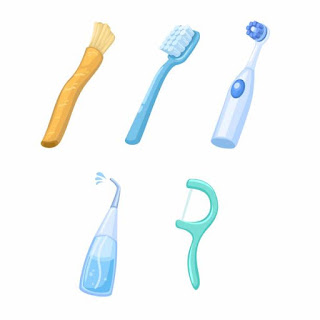Dental care isn’t just about toothpaste and floss. Around the world, different cultures have unique oral hygiene traditions, some of which date back thousands of years. While modern dentistry has introduced standardized practices, many traditional methods are still used today—some with surprising benefits.
Let’s take a journey through the fascinating ways different societies care for their teeth, from natural toothbrushes to ancient herbal remedies.
1. The Miswak: Nature’s Toothbrush (Middle East, Africa, and South Asia)
Before plastic toothbrushes, people in the Middle East, Africa, and South Asia used miswak—a twig from the Salvadora persica tree—to clean their teeth.
✅ How It Works:
The fibrous ends act like bristles, removing plaque and debris
Natural antibacterial properties fight cavities and gum disease
Studies show it can be as effective as modern toothpaste
💡 Modern Take: Many people still use miswak today, especially in Islamic communities, where it’s encouraged in religious teachings.
2. Oil Pulling: The Ancient Detox for Oral Health (India & Ayurveda)
In India, the Ayurvedic practice of oil pulling has been used for over 3,000 years. People swish coconut, sesame, or sunflower oil in their mouths for 10–20 minutes to remove toxins.
✅ Believed Benefits:
Removes bacteria and freshens breath
Strengthens gums and reduces inflammation
May help with whitening and detoxification
💡 Modern Take: While research is still ongoing, many holistic dentists recommend oil pulling as a supplement to brushing and flossing.
3. Chewing Sticks & Herbal Powders (Africa & Indigenous Tribes)
In many African and Indigenous cultures, people have traditionally used chewing sticks and herbal tooth powders instead of toothpaste.
✅ Common Ingredients Include:
Neem sticks (India, Africa) – Natural antibacterial properties
Licorice root (China, Middle East) – Freshens breath and fights bacteria
Charcoal powder (Japan, Africa, Middle East) – Used for whitening teeth
💡 Modern Take: Charcoal toothpaste and herbal powders have become trendy alternatives to commercial toothpaste, but they should be used cautiously to avoid enamel damage.
4. Blackening Teeth for Beauty & Strength (Southeast Asia & Japan)
In Japan, Vietnam, and parts of Thailand, black teeth were once seen as a sign of beauty and maturity. This practice, called Ohaguro, involved coating teeth with a mixture of iron and tannins to prevent decay.
✅ Why People Did It:
Strengthened enamel and prevented cavities
Symbolized social status and wisdom
Protected teeth from acid and bacteria
💡 Modern Take: While this practice has faded, the idea of strengthening teeth with natural ingredients is still popular in holistic dentistry.
5. Salt & Baking Soda for Cleaning Teeth (Europe & Asia)
Before toothpaste, people in Europe and Asia cleaned their teeth with salt or baking soda.
✅ Benefits:
Acts as a mild abrasive to remove plaque
Alkalizes the mouth, reducing bacterial growth
Helps with whitening
💡 Modern Take: Many toothpaste brands now include baking soda as a natural whitening agent. However, using pure salt or baking soda too often can be too abrasive for enamel.
6. Betel Nut Chewing: A Cultural Tradition with a Hidden Risk (Southeast Asia & the Pacific Islands)
In countries like India, Thailand, Indonesia, and Papua New Guinea, chewing betel nut (areca nut) has been a social and cultural practice for centuries.
✅ Why People Chew It:
Acts as a mild stimulant, like coffee
Freshens breath and aids digestion
Has antibacterial properties
❌ The Downside:
Long-term use stains teeth deep red or black
Linked to oral cancer and gum disease
💡 Modern Take: While still common, many public health campaigns warn about the dangers of betel nut chewing.
7. Gold Teeth as a Status Symbol (Latin America & Russia)
In countries like Mexico, Russia, and parts of Central Asia, gold teeth are sometimes seen as a symbol of wealth and prestige.
✅ Why Gold?
Durable and long-lasting
Resistant to decay
A status symbol in some communities
💡 Modern Take: Gold crowns are still used in dentistry today, but mainly for restorative purposes rather than fashion.
Final Thoughts: Ancient Wisdom Meets Modern Dentistry
Across cultures, oral health traditions vary widely, but they all share a common goal—keeping teeth strong and healthy. While modern dentistry offers many advancements, some traditional methods still have value today.
Key Takeaways:
✔ Miswak and herbal remedies can be effective natural alternatives
✔ Oil pulling may help with oral hygiene, but it’s not a replacement for brushing
✔ Traditional abrasives like baking soda should be used in moderation
✔ Cultural beauty practices (like blackened teeth or gold teeth) show how oral care is also a form of self-expression
As we move forward in dentistry, we can learn from these ancient traditions while balancing them with scientific advancements for the best oral health possible.







No comments:
Post a Comment